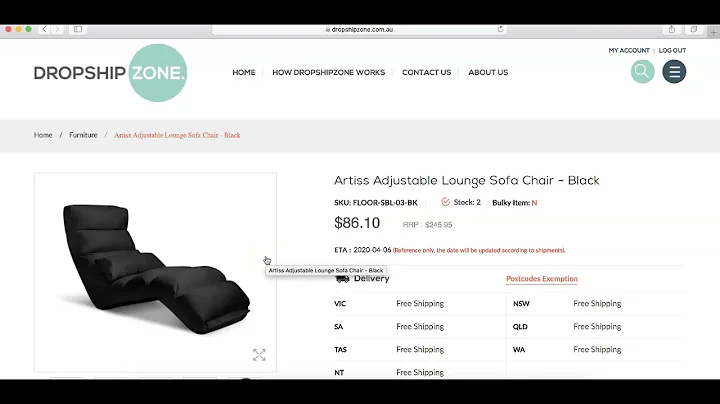How to Overcome Amazon Bans in Dropshipping
Table of Contents
- Introduction
- The Two Types of Bans in Drop Shipping
- Dealing with Amazon Bans
- Avoiding Bans by Having Multiple Amazon Accounts
- Creating Multiple Amazon Accounts
- Using Business Plan to Share Prime
- Organizing and Managing Multiple Accounts
- Steps to Creating a New Amazon Account
- Creating a New Gmail Account
- Making an Amazon Account
- Obtaining Prime for Free
- Placing Legit Orders and Being Extra Cautious
- Executing Orders and Monitoring Emails
- Alternatives to Dealing with Amazon Bans
- Selling Items under $20
- Using a Fulfilled Buyer Service
- Conclusion
How to Overcome Amazon Bans in Drop Shipping
Drop shipping is an increasingly popular method of online retail, allowing individuals to sell products without having to stock or ship them. However, one major challenge that drop shippers face is the issue of account bans, especially when using platforms like Amazon as a supplier. In this article, we will discuss the two types of bans drop shippers encounter and provide you with practical strategies to overcome Amazon bans.
The Two Types of Bans in Drop Shipping
When engaging in drop shipping, you may encounter bans from either eBay or Amazon. While eBay bans are often rare and extreme cases, Amazon bans are more common due to the significant volume of sales generated. This makes navigating the Amazon platform a difficult task, as every seller aims to make sales and increase their revenue. Therefore, it is crucial to understand how to deal with and overcome Amazon bans effectively.
Avoiding Bans by Having Multiple Amazon Accounts
To avoid getting banned on Amazon, one strategy is to have multiple Amazon accounts. By executing one sale per account each day, you can mitigate the risk of getting flagged and eventually banned. Whether you make five or twenty sales daily, having a corresponding number of Amazon accounts will help safeguard against bans. However, it is important to note that making multiple accounts does not mean you will not face bans in the long run. Amazon is likely to flag you for engaging in excessive sales activities across multiple accounts. Therefore, it is crucial to be organized, cautious, and take necessary precautions to prevent flagging.
Creating Multiple Amazon Accounts
Creating multiple Amazon accounts starts with setting up new Gmail accounts. While making Gmail accounts is typically easy, it can become challenging when a phone number is required. To get around this, try various methods such as creating a Gmail account through YouTube, using another Gmail account as a reference, or experimenting with multiple devices. Finding a loophole to avoid providing a phone number is crucial in successfully creating multiple accounts. Once you have one Gmail account set up, you can use it as a reference for creating subsequent accounts without the need for phone verification.
Using Business Plan to Share Prime
Managing multiple Amazon Prime subscriptions may seem daunting. However, if you have a business plan, you can share your Prime benefits across all the accounts under your business. This approach allows you to save on multiple Prime subscriptions while ensuring efficient and timely shipment of orders. However, it is essential to note that if one account is flagged or banned, it may affect all the other linked accounts. Therefore, meticulous organization and maintenance of these accounts are of utmost importance.
Steps to Creating a New Amazon Account
If you have been banned and need to create a new Amazon account, there are two important steps to follow. Firstly, make a new Gmail account without phone verification. Experiment with different methods and devices until you successfully create a Gmail account without being prompted for a phone number. Once you have a new Gmail account, proceed to create a new Amazon account.
Making an Amazon Account
Creating an Amazon account is a straightforward process that does not require much hassle. However, it is vital to note that you do not need Prime for every new account. Instead, utilize a service like Revenue to obtain fresh card details for each new account. By using different card information for each account, you can avoid raising any red flags that may result from using the same card repeatedly. This avoids the need to constantly change your card details or get a new card, simplifying the account creation process.
Obtaining Prime for Free
To enjoy the benefits of Amazon Prime without incurring additional costs, take advantage of the free trial periods. Once you have a new Amazon account, sign up for a free 30-day or 14-day Prime trial. However, remember to cancel the Prime subscription immediately after sign-up to prevent accidental charges. Being proactive in canceling the trial ensures that you have control over your account and helps avoid any surprises or unwanted charges.
Placing Legit Orders and Being Extra Cautious
While some drop shippers prefer not to place any legit orders, it is recommended to place at least one to ensure your account appears genuine. By placing a legitimate order to your own billing address, you indicate to the system that you are not solely drop shipping. This approach adds an extra layer of authenticity to your account and reduces the likelihood of being flagged or banned.
Executing Orders and Monitoring Emails
Once your account is set up, and you have taken the necessary precautionary steps, you can confidently execute orders as usual. However, it is crucial to monitor your Gmail account regularly. Keep an eye out for any emails from Amazon indicating a potential ban or warning. If such an email is received, it is essential to halt any further orders on that particular account. By being vigilant and responsive, you can mitigate the risk of losing access to your account entirely.
Alternatives to Dealing with Amazon Bans
If you find dealing with Amazon bans too cumbersome or tiresome, there are alternative approaches you can consider.
Selling Items under $20
One option is to sell items that are priced under $20. By doing so, you can avoid the necessity of using Prime for shipping, as Amazon provides free shipping for these lower-priced items. This approach reduces the likelihood of bans since non-Prime accounts typically do not face the same level of scrutiny. Selling items at this price range allows you to fulfill orders without worrying about excessive sales activities triggering flags or bans.
Using a Fulfilled Buyer Service
Another alternative is using a fulfilled buyer service. This approach entails utilizing software or services that handle the fulfillment process for you. These services manage their Amazon accounts and take care of the logistics involved in shipping products to customers. While this reduces your control over certain aspects of the process, it relieves you of the burden of managing your own accounts and reduces the chances of bans due to excessive sales activities.
Conclusion
Dealing with Amazon bans in drop shipping can be challenging, but by implementing the strategies outlined in this article, you can effectively overcome these obstacles. Whether it's creating multiple accounts, being cautious with ordering, or exploring alternative selling methods, it is essential to adapt your approach to mitigate the risk of bans. Remember to stay organized, monitor your accounts and emails, and always prioritize the long-term sustainability of your drop shipping business.



















